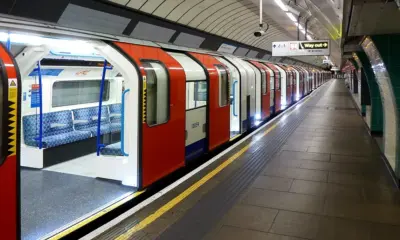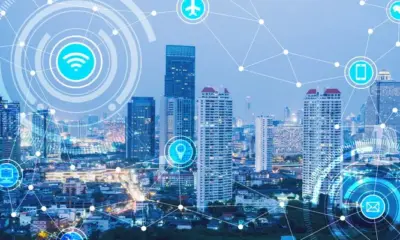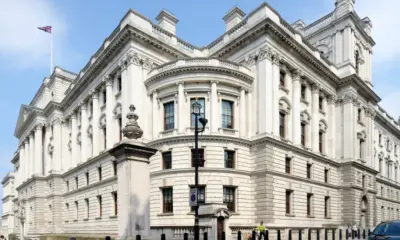Latest News
London Tube Modernisation Project Launches Phase II

London’s iconic Tube network has entered a transformative phase with the launch of Phase II of the Modernisation Project in 2025. Analysts from Transport for London (TfL), BBC News, and Reuters emphasize that this initiative aims to enhance efficiency, safety, and sustainability across the network. Phase II builds upon earlier upgrades, focusing on rolling stock improvements, digital signalling systems, and station refurbishment, reflecting a commitment to meeting growing commuter demand while embracing innovative technology.
Upgrading Rolling Stock and Infrastructure
A key component of Phase II is the introduction of new, energy-efficient trains designed to improve reliability and reduce operational costs. Analysts note that these trains feature modern amenities, including Wi-Fi connectivity, real-time passenger information systems, and accessibility enhancements. Energy-efficient propulsion systems are expected to lower emissions, contributing to TfL’s environmental targets and supporting the UK’s broader net-zero ambitions.
Station refurbishment is another critical aspect of the project. High-traffic stations are receiving upgrades to platforms, escalators, lighting, and ventilation systems. Analysts highlight that these improvements not only enhance passenger experience but also increase capacity, reducing congestion during peak travel times. Enhanced signage and real-time information displays aim to improve navigation, safety, and commuter satisfaction.
Digital Signalling and Network Efficiency
Phase II incorporates advanced digital signalling technology to optimise train frequency and improve operational reliability. Analysts from Bloomberg and TfL note that digital systems enable real-time monitoring, predictive maintenance, and dynamic scheduling. These innovations are projected to increase train throughput by 15–20 percent on key lines, reducing delays and improving overall service efficiency.
The integration of digital signalling also supports long-term scalability. As passenger demand grows, the system can accommodate additional trains, optimise routing, and maintain high service standards without compromising safety. Analysts suggest that this represents a significant technological leap, aligning London’s transport infrastructure with leading global metro networks.
Environmental Impact and Sustainability Goals
Sustainability is central to Phase II of the Tube Modernisation Project. Energy-efficient trains, regenerative braking systems, and low-emission maintenance facilities contribute to reduced carbon output. Analysts from the UK Department for Transport note that these measures are expected to cut the Tube network’s operational emissions by up to 12 percent by 2026.
Station refurbishments also include sustainable design elements such as LED lighting, energy-efficient ventilation, and water-saving fixtures. TfL is committed to achieving environmental targets in alignment with national net-zero objectives, positioning London’s transport system as a model for urban sustainability.
Passenger Experience and Accessibility Enhancements
Phase II prioritizes improvements in passenger experience and accessibility. Step-free access, upgraded lifts and escalators, and tactile guidance systems ensure inclusivity for passengers with reduced mobility. Analysts highlight that these enhancements support TfL’s commitment to equitable access and improve journey efficiency for all users.
Digital innovations, such as mobile ticketing, contactless payments, and real-time travel updates, further enhance convenience. Commuters can plan journeys more effectively, track delays, and access customer support via integrated mobile applications, reflecting the broader trend of digital transformation in public transportation.
Economic and Urban Implications
The Tube Modernisation Project has significant economic and urban implications. Analysts report that infrastructure investments stimulate local employment, construction activity, and supply chain engagement. Phase II alone is projected to create over 3,000 jobs in engineering, construction, and technology sectors, contributing to economic recovery post-pandemic.
Enhanced transport efficiency also supports business operations, tourism, and urban mobility. Reliable and modernised Tube services reduce commuting times, improve connectivity across London, and attract investment to commercial districts. Analysts note that these upgrades strengthen London’s position as a competitive, globally connected city.
Funding and Governance
Phase II of the project is funded through a combination of government grants, TfL revenue, and private sector partnerships. Analysts highlight that governance structures ensure project accountability, cost control, and timely delivery. Independent oversight and stakeholder engagement are integral to maintaining transparency and aligning objectives with public expectations.
Cost management strategies include phased implementation, prioritization of high-impact upgrades, and technology-driven efficiency. Analysts note that these measures reduce the risk of budget overruns and ensure sustainable project execution.
Challenges and Considerations
Despite significant progress, challenges remain. Analysts identify potential risks including supply chain delays, labor shortages, and technological integration complexities. Effective coordination among contractors, engineers, and TfL staff is critical to maintaining project timelines.
Public communication is also essential. Commuters must be informed of service disruptions, phased closures, and alternative routes to minimize inconvenience. Analysts emphasize that transparent, proactive engagement supports user confidence and smooth implementation.
Future Outlook: A Modern, Resilient Tube Network
Looking ahead, Phase II positions London’s Tube network for long-term growth and resilience. Analysts predict enhanced service frequency, improved passenger experience, and reduced environmental impact by 2026. Subsequent phases will expand upgrades to additional lines, incorporate emerging technologies, and further enhance operational reliability.
Digital monitoring, predictive maintenance, and smart infrastructure management will allow TfL to anticipate issues, optimize resource allocation, and deliver consistent, high-quality service. Analysts note that this modernization is critical for maintaining London’s competitiveness as a global city with robust, sustainable public transport.
Conclusion
The launch of Phase II of the London Tube Modernisation Project represents a milestone in urban transport innovation. By combining energy-efficient trains, advanced digital signalling, station refurbishment, and passenger-focused improvements, the project enhances both operational efficiency and user experience. Analysts conclude that these upgrades strengthen London’s economic, environmental, and social infrastructure, ensuring that the city’s iconic Tube network continues to meet the demands of a modern, growing metropolis.




















